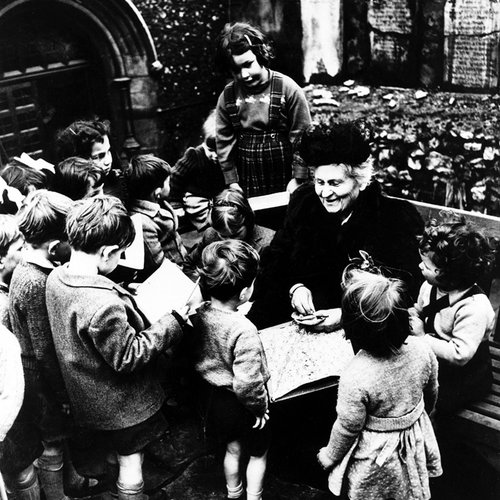(858) 759-0631
I have a picture of Maria Montessori on the wall in the classroom and one of the children asked the other day if that was my Grandmother. It prompted a great conversation and I realized I should send out a little blurb about how remarkable she truly was.
As I hope most of you know, Maria Montessori was Italy's first woman physician who began her work at the turn of the Twentieth Century. Shortly thereafter, Dr. Montessori began working with under-privileged children with a wide variety of learning and physical disabilities. She developed a scientific approach to facilitate early learning and to encourage the development of a well-rounded person. In the classroom, we continue this work by creating a prepared environment which allows the child to select activities from a "smorgasbord" of attractive, hands-on learning materials. These materials are child-sized and are available to the child on low, open shelves. As we now know, Montessori discovered that young children are capable of a great deal more than we believe. By using concrete, manipulative and stimulating sensory materials, the young child can grasp abstract ideas at an earlier age.
Maria Montessori believed that no human being is educated by another person. He or she must do it himself or it will never be done. A truly educated individual continues learning long after the hours and years he spends in the classroom because he is motivated from within by a natural curiosity and love for knowledge. Dr. Montessori felt, therefore, that the goal of early childhood education should not be to fill the child with facts from a pre-selected course of studies, but rather to cultivate his own natural desire to learn.
One small but often overlooked aspect of this is practice, practice, and more practice. In the classroom, we never expect perfection the first time around. The purpose of the Montessori materials is to give the child an opportunity to perfect on their own, with only minimal intervention from adults. This not only allows the child to learn the gross and fine motor skills they need for day to day life, but it helps build a "can do" attitude in the child. As frustrating as it can be at times, nothing brings me more joy then a child shouting "I can do it myself" and I often find myself wanting to just as enthusiastically shout back "yes you can!" I love seeing a child who, only moments earlier was nearly driven to tears of frustration, finally learn to tie their shoes "all on their own." As much as we want to "help" our children and aid them in certain tasks, we really aren't doing them any favors by stepping in when they begin to "complain." It's important to give your child an opportunity to try on their own; this not only builds self-confidence and competency but allows them to build character and develop a "can do" attitude.
Ms. Heather, Inclusive Education Coordinator

